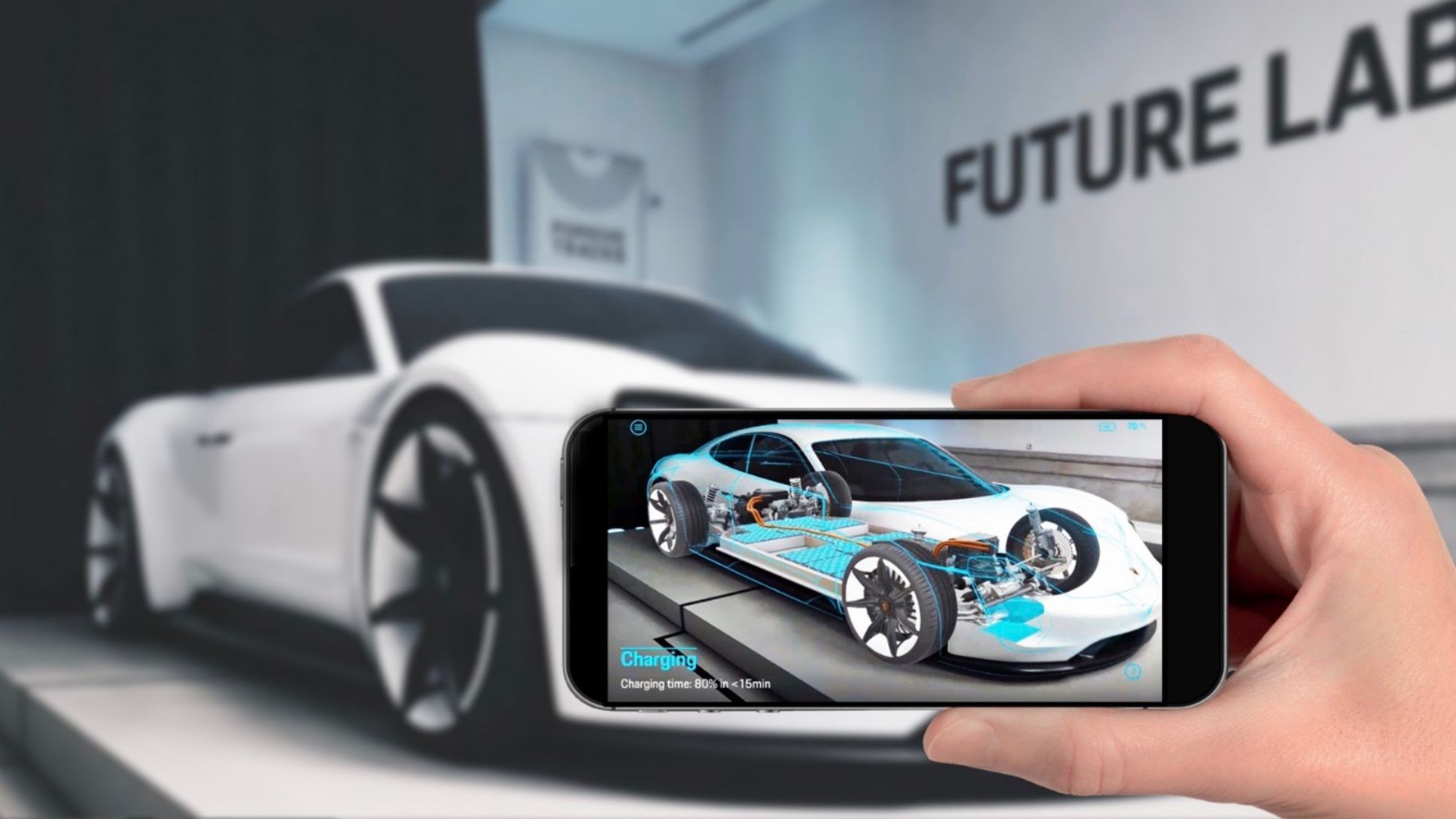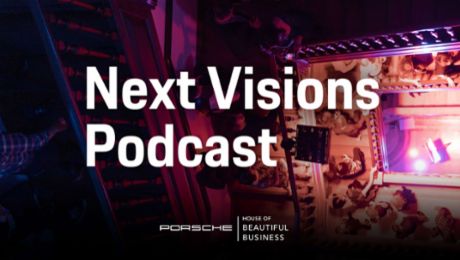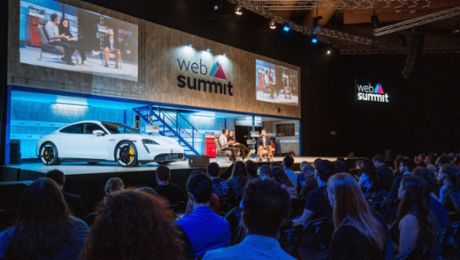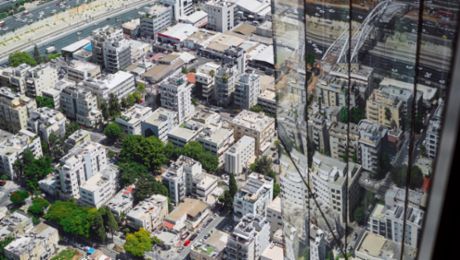Augmented and virtual reality have opened up completely new perspectives for sales at Porsche – both for customers and the after sales area. While customers have the opportunity to explore the world of Porsche in even more depth and, most importantly, interactively, these futuristic technologies are helping service staff in Porsche’s workshops to get to grips with complex technical issues more easily.
The “Mission E Augmented Reality”, created during a collaboration with Google, is particularly exciting for customers. This connection between the physical and digital worlds allows enthusiasts to get a sneak peek at the future of Porsche. The Mission E, Zuffenhausen’s first purely electric sports car, will be launched at the end of 2019. At brand pop-up stores or trade fairs, fans can already view interior and exterior details – either of the Mission E concept study itself or a scaled model – using an app and augmented reality. The intelligent application of augmented reality also makes it possible to display not only the animation of aerodynamics in X-ray mode, but also the complex drive and battery technologies. A further development step will enable the augmented reality experience to be accessed anywhere and at any time.
VR can up-skill employees in the After Sales department
Meanwhile, Porsche is utilising the many possibilities offered by virtual reality (VR) to up-skill employees in the After Sales department. Complex technologies can be clearly demonstrated through the use of VR glasses. When wearing the glasses, the employee is immersed in a virtual workshop, where there are, for instance, several examples of the current Panamera 4 E-Hybrid. With these vehicles, employees learn how to interact with the virtual models, explore the essential components of the high-voltage system and are taken through the precise repair sequence for a high-voltage battery, for example. A drone accompanies the employee in the virtual workshop. It takes on the role of trainer and gives advice on what actions to perform. Virtual learning provides practically limitless opportunities to gain knowledge about vehicle systems and functions. The VR glasses can, for example, provide a view of the electrical lines, which are hidden on the real vehicle. A further advantage is that employees can also learn delicate maintenance procedures virtually, without any risk. While VR training should never replace additional training on real-life vehicles, it can provide an ideal foundation to build upon.
Consumption data
Panamera 4 E-Hybrid: Fuel consumption combined 2.5 l/100 km; CO2 emissions 56 g/km; electricity consumption (combined) 15.9 kWh/100 km
911 GT3 RS: Fuel consumption combined 12.8 l/100 km; CO₂ emissions 291 g/km
Model Range Panamera: Fuel consumption combined 9.5 – 6.7 l/100 km; CO₂ emissions 217 – 171 g/km




